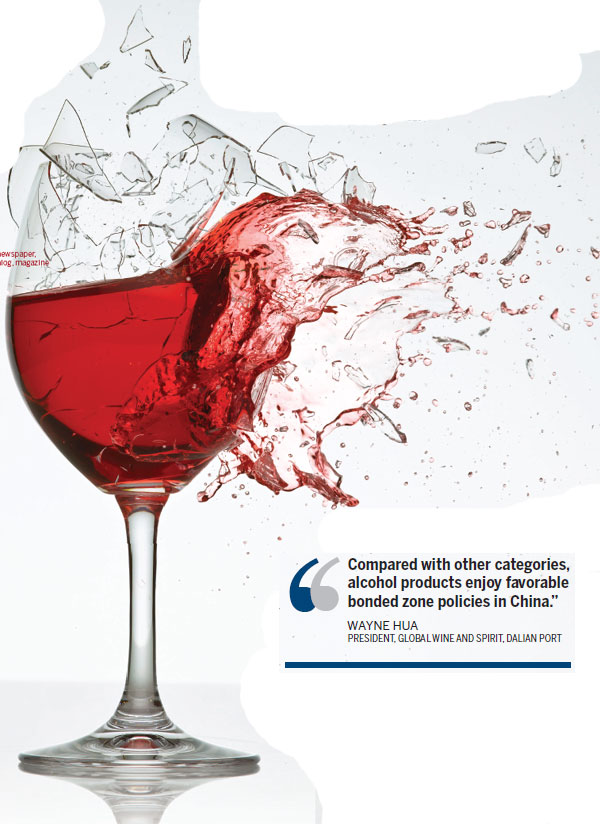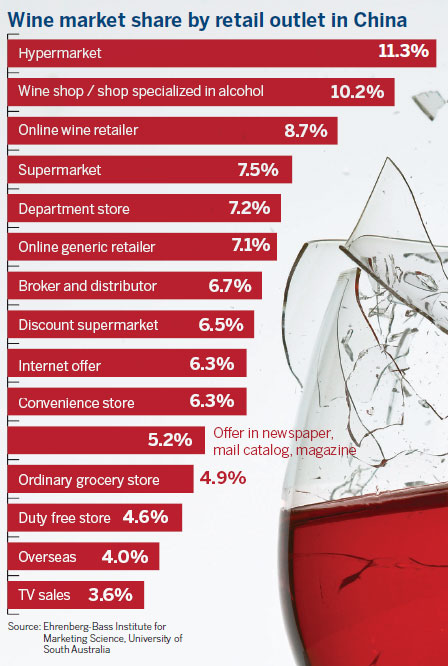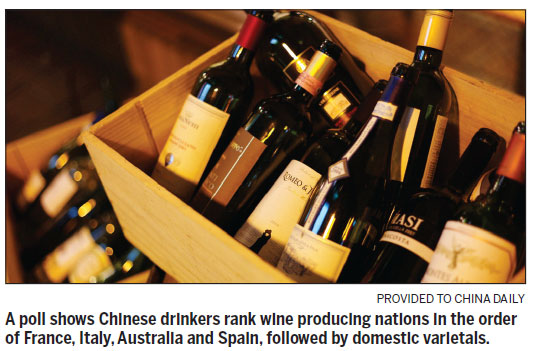Grape expectations
Updated: 2014-12-19 05:21
By Emma Dai(HK Edition)
|
|||||||||


With the economy slowing and an anti-graft drive sparking austerity measures, 2014 is said to have brought tough times for the wine sector in China. But for many it presented the best opportunity ever. Emma Dai reports.
'We want to establish mainland operations as soon as possible," said Annie Leong, business executive at Kal Wine Source Macau Ltd, a wine outsourcer focusing on the high-end market.
"The anti-corruption campaign has burst the bubble. The Chinese market is a lot healthier now. It's time to introduce some really good wine to mainland drinkers," she told China Daily.
Chill in market
Ever since President Xi Jinping initiated a campaign against corruption and government extravagance two years ago, sales of wine - once symbolizing social status and targeting public-funded consumption as well as big-ticket corporate buyers - have encountered strong headwinds on the mainland.
Business has also slowed because of decelerating growth. Instead of dashing forward at 8 percent a year, the world's second-largest economy struggled to meet the target gross domestic product growth rate of 7.5 percent in 2014, and pressure from disinflation is mounting.
"The first half last year was really chilling. Imported wine business plummeted. The decline narrowed a bit in the second half and continues to stabilize this year," said Wayne Hua, president of Global Wine and Spirit Super Center at Dalian port.
Latest figures from the General Administration of Customs show how the market has shrunk nationwide in 2014. From north to south, during the first eight months, Dalian, Shanghai and Shenzhen customs saw value of imported wine drop on year by 6.7 percent, 25.6 percent and 5.2 percent, respectively.
During the same period, Shanghai recorded 5.8 percent fall in import volume, whereas Shenzhen and Dalian saw 7.7 percent and 1.9 percent more wine cleared by customs.
Shift in tastes
The statistics illustrate a sea change for the wine market in China. While consumption of high-end products has been suppressed, momentum is picking up in the mass market.
"This is a new era for the wine business. The change is structural," said Hua from Global Wine. "Chinese consumers are becoming much more reasonable about the money they spend."
Data indicates wine drinkers across the country are shifting to cheaper choices. During the first eight months, average prices of imported wine in Dalian, Shanghai and Shenzhen customs dropped by 8.4 percent, 21.1 percent and 12 percent on year, respectively.
On average, Dalian paid 53 yuan ($8.6) for each liter, while traders in Shanghai and Shenzhen imported at 45.1 yuan and 66.7 yuan per liter, respectively.
"The middle class is buying more, particularly at the lower end," said Victoria Olmedo from Vinos Coloman, a Spanish winery with eight years of experience in China.
While the key for Japan is quality, Chinese consumers prefer economical choices. Products that carry friendly pricing, a good image and taste reasonably well make for good sales, she said.
Vinos Coloman specializes in private labels - blending and bottling wine for clients. And it offers prices of up to 4 euro ($5) per bottle to Chinese importers, including major hypermarket chains such as Lotus.
In the past three years, its annual Asian sales have doubled to 330,000 bottles, of which China accounts for 80 percent. "By the end of 2015, we plan to double that again to half a million," Olmedo said.
Wine and dine
One of the most promising of new trends is that more Chinese are picking up wine drinking. Instead of being given out as gifts and then sitting in cabinets for years, more bottles are being uncorked and enjoyed in private settings.
"People having a relaxed drink at home drink more frequently," said Justin Cohen, research fellow from the Ehrenberg-Bass Institute for Marketing Science at the University of South Australia, which focuses on emerging wine markets research.
Its latest Chinese market study surveyed more than 1,000 urban residents aged 18 to 49 who drink imported wine at least twice a year. The survey found that more than half, or 52 percent, of those who drink wine at home as recreation do so once a week or more. Another 28 percent of leisure drinkers enjoy wine at least once a month.
Separately, 46 percent of those who like to sip wine with informal meals at home drink once a week or more often, whereas one in three consumes wine one to three times a month. Another 61 percent said they share a drink with guests at home at least once a month.
"It's a great opportunity for wine-producing countries that label their products as part of a casual lifestyle," Cohen said. "Those who focus on gift giving and celebration would limit purchasing occasions to a few times a year."
Not surprisingly, most leisure drinkers pay less than 200 yuan per bottle. However, their repurchase rate is much higher than those who buy wine in restaurants and karaoke bars, the survey reveals. "Retail shoppers have more defined preferences," Cohen added.
While physical channels such as hypermarkets and specialized wine shops still dominate the retail market on the mainland, the force of the online marketplace certainly cannot be ignored. The web accounts for over a fifth, or 22.1 percent, of total wine sales, the report shows.
"Sales of wine have more than doubled this year, faster than average category growth on our website," said Chris Guo, vice-president of yhd.com, a Shanghai-based generic online store offering more than 2,000 choices of wine products.
Pricewise, 70 percent of deals focus on wine cheaper than 200 yuan a bottle, while sales in the 200 to 499 yuan category represent 15 percent of deals on the website.
However, yhd.com plans to focus on the 200 to 499 yuan category. "The price range for the most popular wines has been rising the past two years," Guo said. "As the younger generation is keener to enjoy life, we aim to introduce more choices of higher quality. The potential is huge."
Long way to go
Despite wine drinking catching on, the knowledge base of the average Chinese drinker is only "basic", noted Cohen.
The Ehrenberg-Bass survey found French wine-producing regions still dominate in terms of awareness, with Bordeaux recognized by 76 percent and Burgundy by 53 percent of Chinese wine drinkers.
Only 44 percent had heard of Barossa Valley, the most well-known Australian region, while awareness of Yarra Valley was 35 percent, at par with Italian regions such as Tuscany and Barolo. South Africa's Stellenbosch also manages to nail about 30 percent.
In the minds of Chinese drinkers, wine producing countries are ranked in the order of France, Italy, Australia and Spain, followed by domestic varietals, the study found. On the "want to try" list were products from New Zealand, Chile, South Africa and California, which is "good news for market underdogs," Cohen said.
"One of the challenges we have in China is the 50 percent tariff, whereas Chile wine somehow manages to pay none starting 2015," said David Rabie, sales and marketing manager from Wellington Wines, one of the major producers in South Africa.
The company, traditionally focused on the European market, sold just five containers to China last year, compared with its annual productivity of 2,700 containers.
However, Rabie believes the wine business in China is set to "explode", because the beverage is increasingly consumed on a daily basis across the country.
"There's a lot of push on the bilateral trade agreement at this moment," he said. "Once it's settled, in five years' time, we will become one of the major players in China."
Contact the writer at emmadai@chinadailyhk.com

(HK Edition 12/19/2014 page6)